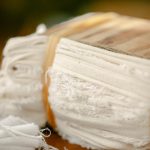Duchess satin fabric is a luxurious, heavy satin known for its smooth, lustrous surface and durable, dense weave. You’ll find it ideal for structured garments like wedding gowns, tailored suits, and elegant evening wear because it holds shape beautifully. Its rich texture shines with sophistication, resisting wrinkles and snags better than regular satin. Duchess satin also works for upscale home décor like drapes and cushions. Keep going, and you’ll uncover more about its care, sewing tips, and versatile uses.
Table of Contents
Key Takeaways
- Duchess satin is a thick, luxurious satin fabric with a smooth, lustrous surface and dense weave, ideal for structured garments.
- Originating in the 19th century, it was favored by European aristocracy for formal wear and royal garments.
- It is highly durable, resists snags and creases, and maintains its polished appearance better than lighter satin fabrics.
- Commonly used in bridal gowns, evening dresses, tailored suits, and elegant interior decor like drapery and upholstery.
- Requires gentle care, including professional dry cleaning, low-heat ironing with a pressing cloth, and careful sewing techniques to avoid damage.
The History and Origin of Duchess Satin
Duchess satin dates back to the 19th century, when it first gained popularity among European aristocracy for its luxurious sheen and heavy weight.
You’ll find it was favored for formal wear and royal garments because it exuded elegance and sophistication.
Over time, duchess satin became synonymous with opulence, often used in wedding dresses and evening gowns.
Duchess satin’s timeless allure shines brightest in wedding gowns and elegant evening wear.
When you wear or work with duchess satin, you’re tapping into a fabric with a rich heritage tied to refinement and status.
This history explains why it remains a top choice for designers aiming to create timeless, high-end pieces.
Understanding this background helps you appreciate duchess satin not just as a fabric but as a symbol of luxury and tradition.
How Duchess Satin Is Made
To achieve the rich texture and luxurious feel that made this fabric a favorite among aristocrats, the production process involves careful craftsmanship. You start by selecting high-quality silk or polyester fibers, then weaving them using a satin weave pattern. This creates the fabric’s smooth, glossy surface and dense structure.
Here’s a quick overview of key steps:
| Step | Material | Technique |
|---|---|---|
| Fiber Choice | Silk/Polyester | Selection |
| Weaving | Satin weave | Jacquard loom |
| Finishing | Heat-setting | Polishing |
Each stage requires precision to guarantee the fabric maintains its signature weight and sheen, making Duchess Satin perfect for formal wear and special occasions.
Key Characteristics of Duchess Satin Fabric
You’ll notice duchess satin has a smooth, lustrous texture with a luxurious finish that stands out.
It’s also known for its weight and durability, making it perfect for structured garments.
Let’s explore what makes these qualities so unique.
Texture and Finish
Although it might look similar to other satin fabrics at first glance, Duchess satin stands out with its exceptionally smooth texture and lustrous finish.
When you touch it, you’ll notice a firm yet silky feel that gives this fabric its luxurious appeal. Here’s what makes its texture and finish unique:
- Silky Surface: The fabric has a glossy, reflective surface that catches light beautifully, enhancing its elegance.
- Dense Weave: Its tightly woven fibers create a firm hand, giving the fabric structure while maintaining softness.
- Matte Backing: Unlike the shiny front, the back has a subtle matte finish, adding versatility in design.
This combination guarantees Duchess satin feels rich and looks stunning, perfect for special occasions.
Durability and Weight
When you choose Duchess satin, you’re opting for a fabric that balances strength with elegance. This material is known for its impressive durability, making it ideal for garments and decor that need to stand up to wear without losing their sheen.
Despite its sturdy nature, Duchess satin isn’t heavy or cumbersome. It has a medium to heavy weight, giving it a structured feel that helps maintain shape, especially in formalwear like gowns and suits. You’ll appreciate that it drapes beautifully while offering enough heft for a polished silhouette.
This combination of weight and durability means your Duchess satin pieces hold up well over time, resisting wrinkles and tears better than lighter, more delicate fabrics. It’s perfect when you want longevity without sacrificing luxury.
Differences Between Duchess Satin and Other Satin Fabrics
You’ll notice Duchess satin feels thicker and more luxurious compared to other satin fabrics, thanks to its heavier weight.
It also stands out for its durability, maintaining a polished appearance even after wear.
Understanding these texture and strength differences will help you choose the right fabric for your project.
Texture and Weight Comparison
Since Duchess satin boasts a denser weave and heavier weight than other satin fabrics, you’ll notice a distinct difference in texture and feel.
Here’s what sets it apart:
- Texture: Duchess satin feels smoother and more substantial, offering a luxurious, almost creamy surface that’s less prone to snagging.
- Weight: It’s considerably heavier, giving it a structured drape compared to lighter satin varieties that flow more freely.
- Hand Feel: When you touch Duchess satin, it feels firm yet soft, unlike other satins that can feel slippery or delicate.
These qualities make Duchess satin ideal when you want fabric that holds shape well without sacrificing the silky, elegant finish satin is known for.
You’ll appreciate how the texture and weight contribute to its overall premium feel.
Durability and Appearance Differences
The sturdy texture and substantial weight of Duchess satin contribute directly to its impressive durability and distinctive appearance. Unlike other satin fabrics, Duchess satin resists snags and creases better, so you can count on it for long-lasting elegance. Its matte finish sets it apart from the glossy sheen typical of regular satin, giving garments a sophisticated, refined look. Check out the differences below to see how Duchess satin stacks up against other satin types:
| Feature | Duchess Satin |
|---|---|
| Durability | High; resists wear and tear |
| Appearance | Matte finish, elegant look |
| Weight | Heavier, substantial feel |
| Crease Resistance | Excellent; holds shape well |
When you want a fabric that balances luxury and strength, Duchess satin delivers every time.
Common Uses of Duchess Satin in Fashion
Although duchess satin is known for its luxurious sheen and sturdy texture, you’ll find it plays a versatile role in fashion. You can rely on this fabric to add elegance and structure to various garments beyond bridal and evening wear.
Duchess satin combines luxury and durability, enhancing elegance and structure in a variety of fashion pieces.
Here are three common uses you might explore:
- Tailored Suits and Jackets – Duchess satin provides a polished finish and retains shape beautifully, perfect for formal suits or statement jackets.
- Skirts and Dresses – Its smooth surface and weight help create flattering silhouettes, making your skirts and cocktail dresses stand out.
- Accessories – From clutches to hairbands, duchess satin adds a touch of sophistication to your accessories collection.
Using duchess satin can elevate your wardrobe with both style and durability.
Duchess Satin in Bridal Wear and Evening Gowns
When you choose duchess satin for bridal wear and evening gowns, you get a fabric that combines elegance with structure.
It holds its shape beautifully, making it perfect for popular silhouettes like ball gowns and mermaid styles.
You’ll find it enhances the overall look with a smooth, luxurious finish that stands out on special occasions.
Elegance and Structure
Because Duchess satin offers a luxurious sheen and firm hand, you’ll find it ideal for creating gowns that demand both elegance and structure.
When you choose this fabric, you get a material that holds its shape beautifully, making it perfect for designs requiring volume and crisp lines.
Here’s why you’ll love using Duchess satin for your bridal or evening wear:
- Structured Silhouettes: It supports dramatic shapes without collapsing, giving your gown a regal presence.
- Smooth Finish: The glossy surface creates a sophisticated look, catching light in all the right ways.
- Durability: Its heavyweight nature guarantees your dress maintains form throughout the event, resisting wrinkles and sagging.
With Duchess satin, your gown won’t just look stunning—it’ll stand out with a flawless, polished form.
Popular Bridal Silhouettes
The way Duchess satin holds its shape and gleams under light makes it a favorite for bridal and evening gown silhouettes that demand both drama and refinement.
When you choose this fabric, you can confidently opt for ball gowns with voluminous skirts that maintain their structure without collapsing. A-line dresses also benefit, as the satin’s stiffness creates clean lines that flatter your figure.
For a sleek look, mermaid and trumpet styles come alive in Duchess satin, highlighting curves while offering a polished sheen. You’ll find that this fabric supports styles featuring intricate draping or pleats, ensuring they stay crisp throughout your special day.
Whether you want timeless elegance or modern sophistication, Duchess satin helps you achieve bridal and evening wear that truly stands out.
Applications of Duchess Satin in Interior Design
Although duchess satin is often celebrated for its use in fashion, its luxurious texture and rich sheen make it a standout choice for interior design as well.
You can elevate your living spaces by incorporating this fabric in various ways. Here are three popular applications to contemplate:
- Upholstery: Use duchess satin on accent chairs or ottomans to add a touch of elegance and sophistication.
- Drapery: Its smooth finish and weight make it perfect for curtains that both look stunning and provide a sleek silhouette.
- Decorative Pillows: Add duchess satin pillows to your sofas or beds for an instant boost of luxury and comfort.
Benefits of Using Duchess Satin Fabric
When you choose duchess satin fabric, you’re investing in a material that combines durability with an unmistakable luxurious sheen. This fabric feels smooth to the touch and holds its shape well, making it perfect for formal wear and elegant home décor. You’ll appreciate how it resists wrinkles and maintains a polished appearance throughout the day.
Here’s a quick overview of duchess satin’s benefits:
| Benefit | Why It Matters |
|---|---|
| Luxurious Finish | Adds elegance and sophistication |
| Durability | Withstands wear and tear |
| Wrinkle Resistance | Keeps garments or furnishings crisp |
| Shape Retention | Guarantees structured, flattering designs |
With duchess satin, you get both style and substance in one fabric.
Popular Colors and Patterns in Duchess Satin
Because duchess satin is prized for its elegant sheen and durability, you’ll find it available in a wide range of popular colors and patterns that suit various tastes and occasions.
When choosing duchess satin, consider these top options:
- Classic Solids: Rich jewel tones like emerald, sapphire, and ruby are favorites for formal wear, while soft pastels work beautifully for bridal and special events.
- Metallic Shades: Gold, silver, and champagne hues add a subtle shimmer, perfect for evening gowns and upscale decor.
- Subtle Patterns: While duchess satin is mainly known for solid colors, some variations include delicate jacquard weaves or embossed floral motifs, giving fabric texture without sacrificing its smooth finish.
These choices guarantee you find the perfect duchess satin to match your design vision with sophistication.
How to Care for and Maintain Duchess Satin
Choosing the right color and pattern for your duchess satin sets the stage, but keeping its luxurious look means knowing how to handle it properly.
Always store your duchess satin away from direct sunlight to prevent fading. When cleaning, opt for professional dry cleaning to maintain its smooth texture and sheen. If you must wash at home, use cold water and a gentle detergent, and never wring or twist the fabric.
Iron on the lowest heat setting, placing a pressing cloth between the iron and fabric to avoid shine marks. Avoid harsh chemicals or bleach, as they can damage the fibers.
Finally, hang your duchess satin garments on padded hangers to help maintain their shape and prevent creases. Following these steps guarantees your fabric stays elegant and durable.
Tips for Sewing and Working With Duchess Satin
Although duchess satin offers a stunning finish, sewing it requires careful attention to detail to prevent puckering and shifting. You’ll want to handle the fabric gently and use the right tools to achieve professional results.
Here are three essential tips:
- Use sharp, fine needles (size 70/10 or 80/12) to avoid snagging the fabric.
- Choose a straight stitch with a shorter stitch length to maintain smooth seams.
- Stabilize the fabric with tissue paper or a lightweight interfacing to prevent slipping while sewing.
Additionally, press your seams carefully with a low-heat iron and a pressing cloth to avoid shine or damage.
With patience and the right techniques, you’ll create beautiful garments that highlight duchess satin’s luxurious look.
Where to Buy High-Quality Duchess Satin Fabric
Finding high-quality duchess satin fabric can make all the difference in your project’s final look and feel. To get the best fabric, start by exploring reputable fabric stores, both online and local.
Specialty boutiques often carry premium duchess satin with superior weave and finish. Online retailers like Mood Fabrics, Fabric.com, and Etsy offer wide selections, letting you compare quality and prices easily.
When buying, check for fabric weight and fiber content to guarantee durability and sheen. Request samples if possible to assess texture and color in person.
Avoid cheap, low-grade satin that may look dull or feel rough. By choosing trusted sellers and inspecting fabric details, you’ll secure duchess satin that elevates your designs and stands up to wear.
Frequently Asked Questions
Is Duchess Satin Fabric Hypoallergenic?
You might find duchess satin fabric generally hypoallergenic since it’s smooth and less likely to irritate sensitive skin. However, if you’re prone to allergies, check the fiber content carefully to avoid reactions.
Can Duchess Satin Be Dyed at Home?
You can dye duchess satin at home, but you’ll need fabric-specific dyes and proper preparation. Since it’s a dense material, expect longer dyeing times and guarantee even saturation for the best, vibrant results.
Does Duchess Satin Fabric Wrinkle Easily?
You want smoothness, you want elegance, and luckily, duchess satin doesn’t wrinkle easily. You’ll find it holds its shape well, resisting creases better than many fabrics, so your garments stay polished and pristine longer.
Is Duchess Satin Suitable for Summer Clothing?
Duchess satin isn’t the best choice for summer clothing since it’s thick and less breathable. You’ll likely feel too warm and uncomfortable wearing it in hot weather, so opt for lighter, airier fabrics instead.
How Eco-Friendly Is Duchess Satin Production?
You’ll find duchess satin production isn’t very eco-friendly since it often uses synthetic fibers and intensive processes. If you want sustainable options, consider natural fabrics or certified eco-friendly satins instead.
- A Guide to Simple Staining: The Technique Using Only One Dye - July 13, 2025
- Batik Fabric Dyeing: The Ancient Technique Explained - July 13, 2025
- A Step in Resist Dyeing: Understanding the Process - July 13, 2025







